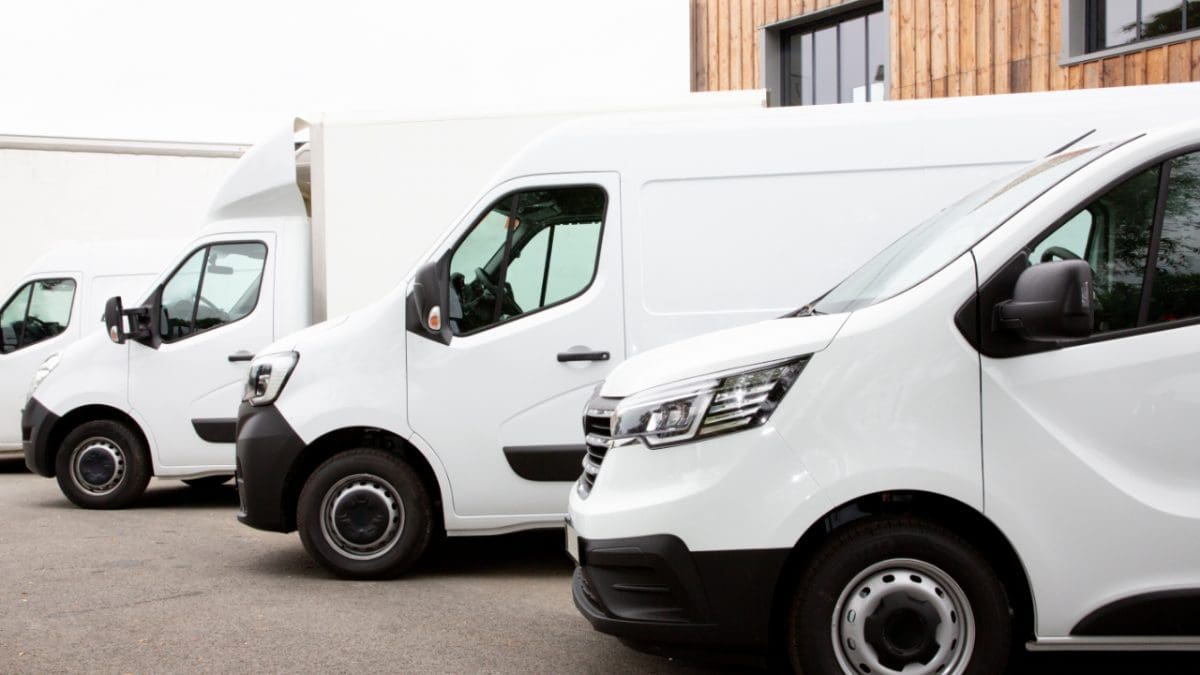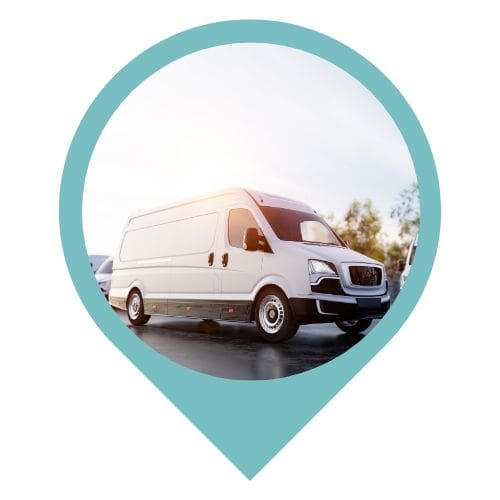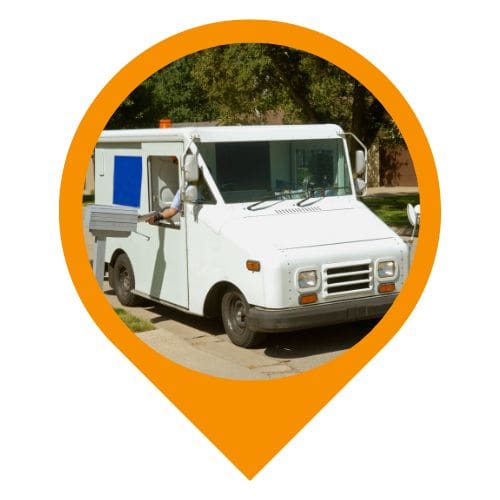
Last-mile delivery has become a critical component of the supply chain for retailers and businesses alike. To guarantee fast and reliable deliveries, companies often rely on fleets of vehicles. But what is a fleet? How does it impact last-mile deliveries?
Today we’re taking a look at fleets and their significance in the world of transportation and deliveries. Whether you’re a business owner or a driver, understanding the ins and outs of fleets will give you some insights into optimizing your operations and achieving successful last-mile deliveries.
What is a Fleet?
What is a fleet and why do businesses need them? A fleet is a group of vehicles owned or managed by a company or organization. A well-organized fleet is a must-have for businesses. These vehicles are specifically designated for transportation and logistics, a key element in the smooth flow of goods from one location to another. Fleets come in different sizes, ranging from a few vehicles to an extensive lineup of trucks, vans, or specialized vehicles.
Fleets are the backbone of delivery operations and the means businesses use to fulfill customer orders quickly and efficiently. They are vital in the last-mile stage of the supply chain where goods are transported from a local hub or distribution center to the final destination—often a customer’s doorstep.
Fleet managers and logistics professionals work endlessly to ensure that vehicles are properly maintained and serviced, drivers are trained, and routes are optimized for efficiency.
Types of Fleets: Exploring Different Fleet Vehicles
What is a fleet vehicle? There are many types of fleets, each designed for specific transportation needs. When building a fleet for your last-mile deliveries, it’s important to know about the different types of fleet vehicles available as well as their pros and cons.
1. Vans and Sprinter Vans

Vans, including the popular Sprinter vans, are highly flexible and widely used in last-mile delivery operations. They offer a balance between cargo capacity and maneuverability so they’re handy for navigating urban areas with narrow streets and limited parking. Vans are ideal for delivering small to medium-sized packages efficiently.
Pros:
- Maneuverable and agile in urban environments.
- Good cargo capacity for their size.
- Easy loading and unloading of packages.
- Lower fuel consumption compared to larger trucks.
Cons:
- Limited cargo space compared to larger vehicles.
- Less suitable for transporting bulky or oversized items.
- Reduced load capacity compared to trucks.
2. Box Trucks

Box trucks, sometimes called cube vans or straight trucks, are larger than vans with more cargo space. They’re commonly used for transporting larger or heavier packages and are well-suited for businesses dealing with furniture, appliances, or other bulky items.
Pros:
- Ample cargo space for larger items.
- Suitable for both residential and commercial deliveries.
- Provide better protection for fragile or valuable goods.
- Can accommodate various loading and unloading equipment.
Cons:
- Limited maneuverability in tight urban areas.
- Higher fuel consumption compared to vans.
- Require adequate parking and turning space.
3. Step Vans

Step vans, or walk-in vans, have a box-shaped body and a step-up entrance. These vehicles strike a balance between cargo capacity and ease of access. They are excellent for delivery services. Step vans are very useful for businesses that make frequent stops and need quick loading and unloading.
Pros:
- Ample cargo space for various types of deliveries.
- Easy access to the cargo area for efficient loading and unloading.
- Suitable for multi-stop deliveries.
- Provide a professional and uniform appearance for branding.
Cons:
- Limited maneuverability in crowded urban areas.
- Higher fuel consumption compared to smaller vehicles.
- May require specialized training for drivers due to their unique design.
4. Electric Vehicles (EVs)

With the growing importance of sustainability, electric vehicles (EVs) are growing in popularity among fleet operators. EVs offer lower emissions, reduced operating costs, and the potential for tax incentives or rebates. EVs are increasingly used for last-mile deliveries. They’re particularly well-suited for urban deliveries with shorter distances.
Pros:
- Zero tailpipe emissions, reducing environmental impact.
- Lower fuel and maintenance costs compared to traditional vehicles.
- Potential for tax incentives or rebates.
- Enhanced public perception and brand image.
Cons:
- Limited driving range compared to conventional vehicles.
- Longer charging times, requiring careful route planning.
- Limited availability of charging infrastructure in some areas.
- Higher upfront costs for vehicle acquisition.
Role of Fleets in Last-Mile Deliveries: Reliable and Efficient Operations
What is a fleet’s role in the last mile? When it comes to deliveries, fleets are crucial in guaranteeing the smooth and timely transportation of goods from distribution centers to customers’ doorsteps. Choosing the right ones can optimize your last-mile delivery operations.
Importance of Reliable Fleet Vehicles
Reliability is a necessity when it comes to delivery vehicles. Downtime due to breakdowns or repairs can result in delayed deliveries, unhappy customers, and increased costs. An investment in reliable vehicles reduces these risks and gives you a consistent and dependable delivery schedule. Look for vehicles with a reputation for reliability or strong reliability ratings from reputable sources like Consumer Reports. Also, look for comprehensive maintenance and warranty options to keep your fleet on the road.
Factors to Consider in Vehicle Selection
When choosing vehicles for your fleet, there are several things to consider. First, consider the specific needs of your last-mile delivery operations. You need vehicles that offer sufficient cargo capacity and maneuverability to navigate in urban areas. With the right load capacity to accommodate various package sizes and quantities, you’ll cut down the need for multiple trips.
Fuel usage is another consideration. Select vehicles offering good fuel efficiency. Also, prioritize vehicles with low maintenance requirements and a reputation for durability to cut down the need for frequent repairs and associated expenses.
Impact of Efficiency on Last-Mile Delivery Costs
Efficiency is a key driver in controlling last-mile delivery costs. Vehicles that offer good gas mileage help reduce fuel costs. By selecting vehicles with just the right cargo capacity and load efficiency, you can make the most of each delivery trip. That minimizes the number of vehicles required and lowers labor costs.
Efficient vehicles also minimize maintenance costs. With fewer breakdowns and repairs, maintenance expenses decrease. Regularly monitor vehicle performance, follow their service schedule, and train drivers on safe and efficient driving practices to get the most from your fleet’s performance and minimize unexpected costs.
Fleet Optimization: A Cost-Cutting Measure
Fleet optimization is a top priority when it comes to cutting down last-mile delivery costs. By using technology and data analytics, fleet managers can streamline operations, optimize routes, and improve overall efficiency. Implementing route planning software, like Elite EXTRA’s Routing and Dispatch software, helps identify the most efficient delivery routes, reduce mileage, and lower fuel costs.
Pairing it with telematics systems also provides real-time insights into vehicle performance so you can stay on top of maintenance and identify areas for improvement. By monitoring and analyzing fleet data, you can make informed decisions on how to best use your resources, reduce expenses, and proved better customer service.
Outsourcing Last-Mile Deliveries: Exploring the Benefits of Third-Party Fleets
Some may be asking ‘What is a fleet and does my company need one?’ For some businesses, the answer is no. Many companies today are turning to third-party fleets as an alternative to owning and managing their own delivery vehicles. But what exactly is a third-party fleet? Why has there been a rise in companies outsourcing their deliveries?
Understanding Third-Party Fleets
A third-party fleet refers to a group of vehicles and drivers that are operated by an external company or service provider. Instead of maintaining an in-house fleet, businesses can partner with these specialized providers to handle their last-mile deliveries. The arrangement allows companies to take advantage of the expertise and resources of the third-party fleet provider to guarantee quick and reliable deliveries to their customers.
Driver Shortage and the Rise of Outsourcing
One of the key factors driving the increased adoption of third-party fleets is the ongoing driver shortage in the transportation industry. Finding and keeping qualified drivers has become a significant challenge for many companies. The shortage puts growing pressure on businesses to look for alternative solutions to meet their delivery demands.
By outsourcing their delivery fleets, companies can tap into a pool of experienced drivers provided by the third-party delivery service. These drivers are well-trained and equipped to handle last-mile deliveries. There’s no longer a need for companies to recruit and manage their own driver workforce and they can focus on their core operations.

Additional Benefits of Third-Party Fleets
Apart from addressing the driver shortage, outsourcing last-mile deliveries through third-party fleets offers several more advantages. It provides scalability and flexibility. Companies can adjust their delivery capacity based on seasonal fluctuations and changing customer demands without the need to invest in additional vehicles or drivers. The flexibility allows businesses to respond quickly to market dynamics while staying within their budget.
Partnering with a third-party fleet service provider can also offer operational cost savings. Companies can avoid the upfront costs associated with purchasing, maintaining, and insuring a fleet of their own. The third-party provider takes on the responsibility of managing vehicle maintenance, repairs, and compliance with industry regulations.
A final benefit is access to advanced technology and expertise. Established third-party fleet providers often have robust delivery management systems, route optimization software, and real-time tracking capabilities. By using these technological solutions, businesses can improve the efficiency and visibility of their last-mile deliveries.
Fleet FAQs: Answering Your Burning Questions
Now that we’ve answered the question ‘What is a fleet?’ there are many other questions that arise. From the number of vehicles that constitute a fleet to the optimal size for efficient operations, here are some frequently asked questions.
How Many Vehicles Make a Fleet?
The number of vehicles that make up a fleet can vary depending on the context and industry. A common rule of thumb is that a fleet typically consists of three or more vehicles. This small number allows for coordinated operations and ensures smooth service even if one vehicle is temporarily out of commission.
While three vehicles can be considered the baseline, larger fleets generally offer increased capacity, flexibility, and scalability. Many businesses with substantial delivery requirements maintain fleets with five or more vehicles to meet customer demands. Businesses that buy or lease 10 or more vehicles qualify as a commercial fleet and receive a fleet registration number.
How Many Vehicles Does Your Company Need?
Determining the optimal fleet size for efficiency requires careful consideration of a few things like delivery volume, geographic coverage, and the specific needs of your business. If the fleet is too small it may struggle to handle peak demand periods. An oversized fleet can result in unnecessary expenses and a surplus of resources you aren’t using.
To find the right balance, businesses need to examine their historical delivery data, look at growth projections, and consider industry benchmarks. Conducting a thorough analysis of delivery patterns and customer demands can help determine the fleet size needed to meet current and future needs. The analysis should also consider the potential benefits of fleet optimization strategies such as route planning and load optimization.
Should You Expand Your Fleet?
Expanding a fleet requires careful evaluation and planning. As your business grows, you may need to increase your fleet size to accommodate the rising demand. But, it’s important to consider the financial implications, operational capacity, and market conditions before investing in more vehicles.
Before expanding your fleet, consider alternative options such as partnering with third-party fleet providers or leveraging crowdsourced delivery services. These alternatives can help bridge the gap between supply and demand without the need for immediate fleet expansion. By looking at different strategies, you can find the most cost-effective and efficient approach to meet your business needs.

What Factors Should I Consider When Choosing Fleet Vehicles?
When selecting vehicles for your fleet, several factors should be taken into account. Reliability is a top priority. Choosing vehicles with a proven track record of dependability can minimize the risk of breakdowns and disruptions to your delivery operations.
Fuel efficiency is another critical factor. Opting for vehicles with good fuel economy can help cut operating costs and reduce the environmental impact of your fleet. You might also consider the load capacity of the vehicles because it’s essential to ensure they can accommodate the types of deliveries you handle.
Other factors to evaluate include maintenance and repair costs, safety features, vehicle lifespan, and the availability of service and support. Looking at all these factors will help you make informed decisions and select fleet vehicles that align with your business goals and requirements.
Why is Fleet Optimization Important in Reducing Last-Mile Delivery Costs?
Fleet optimization is vital in reducing last-mile delivery costs. By optimizing routes and load capacities, businesses can minimize fuel consumption, reduce vehicle wear and tear, and lower maintenance and repair expenses.
Efficient route planning allows drivers to navigate the most direct and time-saving paths, reducing unnecessary mileage and saving on fuel costs. Load optimization ensures that vehicles are used to their maximum capacity, maximizing the number of deliveries per trip and reducing the need for multiple trips or additional vehicles.
It also helps you meet your customers’ needs by guaranteeing timely deliveries and reducing delays. By streamlining operations, businesses can cut down on costs associated with failed deliveries, returns, and customer complaints.
Investing in fleet management software and using advanced technologies can further improve fleet optimization efforts. Real-time tracking and data analytics enable businesses to monitor and analyze fleet performance, identify areas for improvement, and make data-driven decisions to improve their last-mile delivery operations.
Conclusion
Understanding the basics of fleet management is a priority for businesses involved in last-mile deliveries. By carefully analyzing delivery data, assessing growth projections, and exploring optimization strategies, businesses can determine the right fleet size that balances efficiency and cost-effectiveness. Whether you choose to expand your fleet or explore alternative delivery solutions, adapting to meet evolving customer demands is essential for success in the competitive last-mile delivery landscape.
Discover how Elite EXTRA’s Routing & Dispatch software can revolutionize your last-mile delivery fleets. Our software seamlessly integrates with your existing business systems, including ERP, POS, and eCommerce platforms. Experience efficient route planning, real-time dispatching, automated customer notifications, seamless order fulfillment, and valuable managerial insights. With 25+ years of industry experience, Elite EXTRA offers a fully integrated last-mile ecosystem and feature integrations. Request a demo today and let us customize a solution tailored to your unique operations.
Sources
https://www.automotive-fleet.com/10193828/report-ranks-top-u-s-last-mile-delivery-companies
https://www.alliedmarketresearch.com/
https://www.apqc.org/what-we-do/benchmarking/open-standards-benchmarking/measures/average-last-mile-vehicle-capacity







